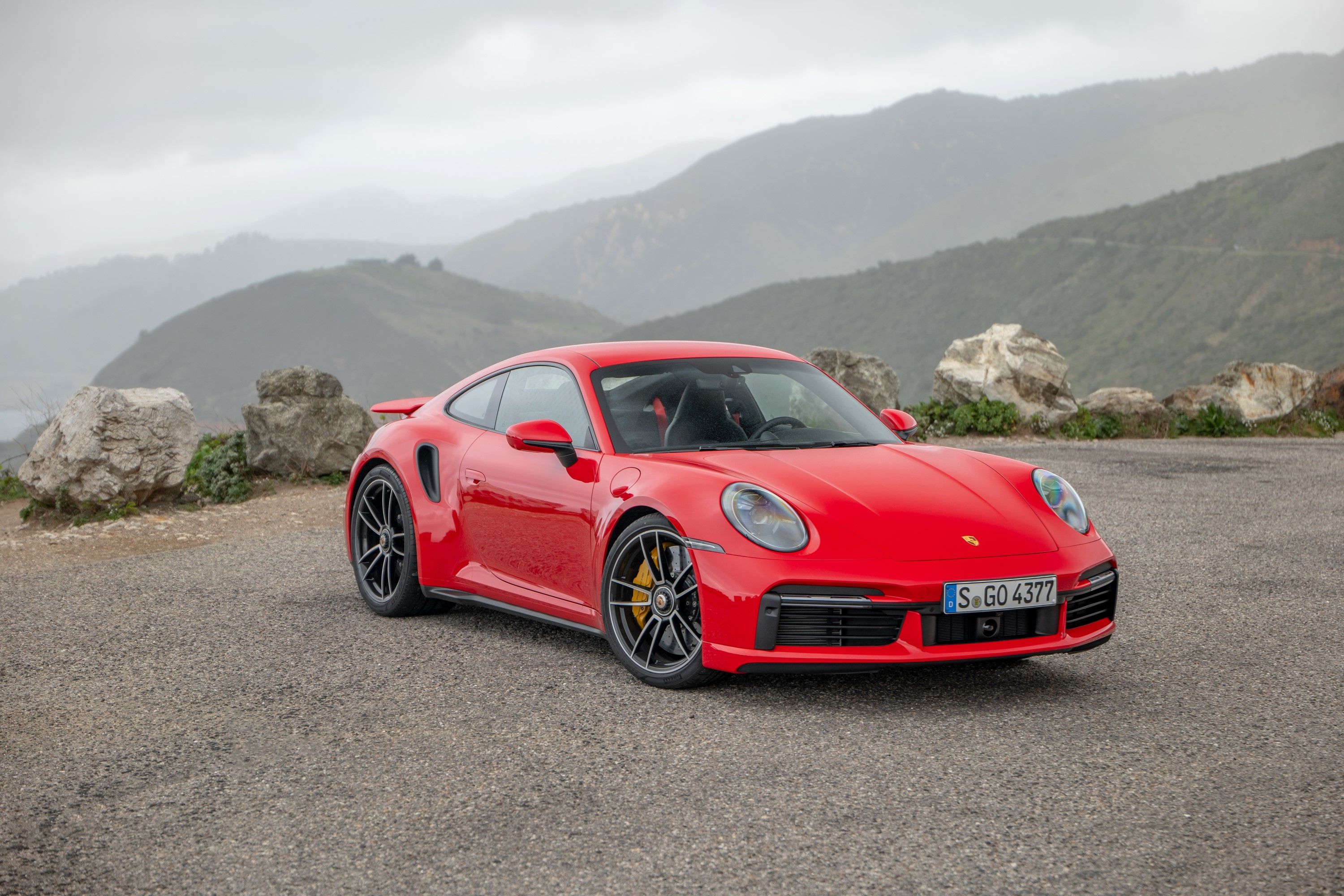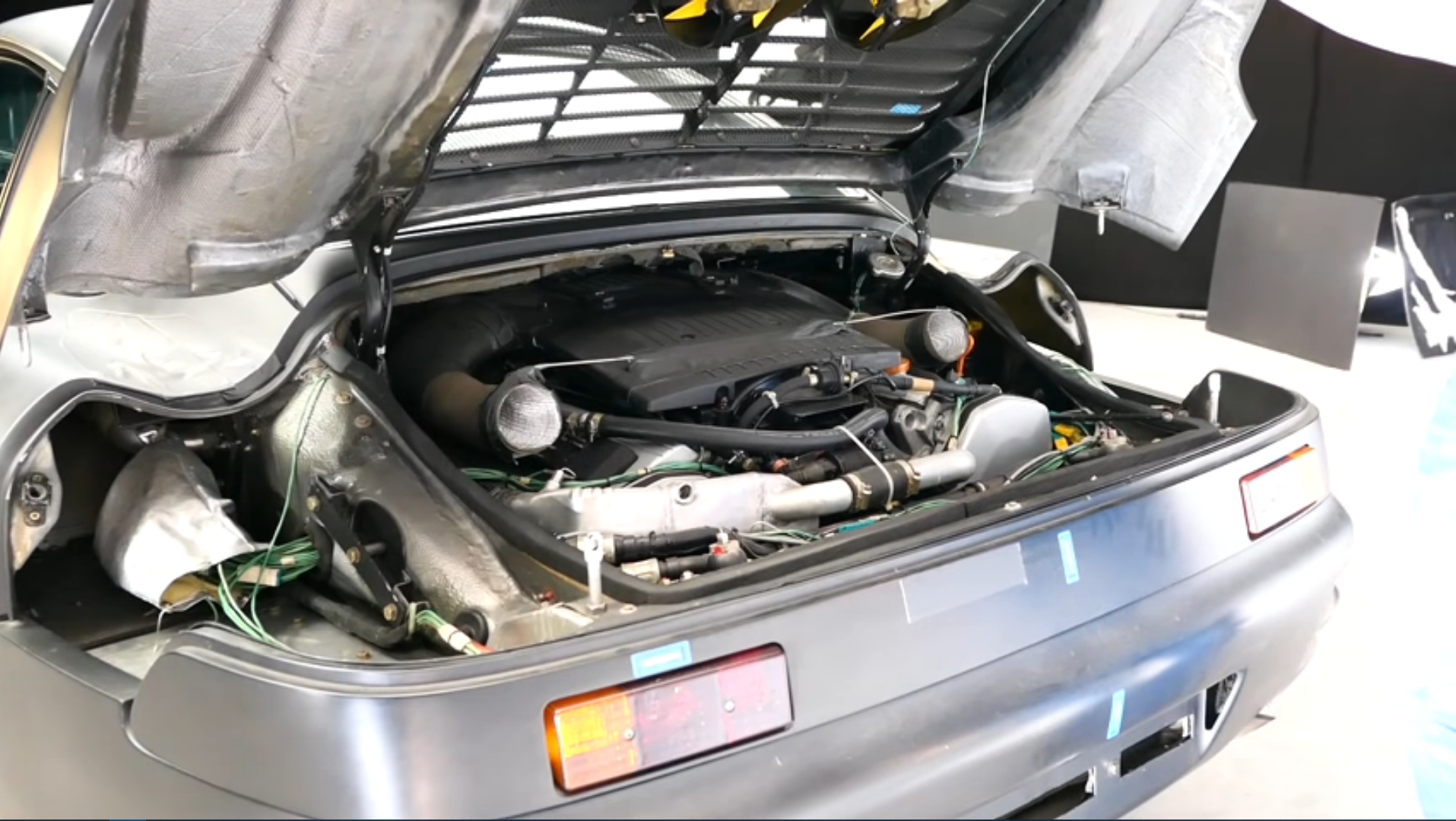
The Porsche 959 is still the greatest car ever to come out of Stuttgart, say some fans of the Weissach-based automaker. It debuted many technologies that were way ahead of their time, but what you may not know is that it was never Porsche's intention to keep these technologies exclusive to the 959 for an extended period of time. In fact, it had begun development on a replacement for the 930 Porsche 911 Turbo in the mid-eighties, and while some think that the Project 965 was the development car for the 964 911 Turbo, the truth is actually far more interesting. Watch the video below to learn the history of the mythical V8-powered 911 that would come to be known as the Black Bomber.
The year was 1984, and Porsche was looking to replace the 930, a car that would ultimately be around for 15 years. Development on the 965 Super Turbo began, with this intended to be a sports car that would sit above the 930 Turbo in the hierarchy but with many of the advances of the 959 being introduced at a much more affordable price point. These would have included active all-wheel drive and self-leveling electronically-controlled air suspension. The 965 was also supposed to inherit the option of twin-clutch technology that had been so successful on Porsche's 956 and 962 racecars.
Project 965 was scheduled to release in 1990 as the 969, with the name being derived from the 964 platform and the 959 tech. Porsche hoped to sell 2,000 units a year at a price of DM180,000 (around $49,000, not accounting for inflation), which was less than half what the 959 supercar sold for. Unfortunately, Dr. Ulrich Bez, Porsche's CEO at the time, decided in December of 1988 that the project should be canned due to extraordinarily high costs. Remember, this was before the Boxster came along to save the company from financial ruin. Fortunately, the car continued to be used for radiator resting as Porsche began looking to produce fully water-cooled cars.
The example you see in the video is the only prototype to survive from a group of 16. Known as version L7, the car was painted matte black because it was developed on public roads long before vinyl camouflage was popular. The front bears the indicator clusters of the front-engine 928, the body is clearly that of a G-series Porsche, and there's more than a passing nod to the 959 in the overall look. NACA ducts on the rear wings were taped up on this development car, but there are plenty of other cool details if you look hard enough, the most important of which is the V8 engine.
It's a water-cooled V8 from Audi in here, but various engines were tried out across the prototypes, including a 3.4-liter twin-turbo motor and another water-cooled V8 developed by Porsche itself. Had the car reached the production phase, it would have been the first fully water-cooled Porsche (technically, the 959 was both water- and air-cooled) and would have arrived almost a decade before the 996. See, Porsche wanted four-valve technology, and that would have been very difficult to achieve without water cooling. Nevertheless, as mentioned earlier, this car remained beneficial to Porsche's water-cooled ambitions and featured cylindrical radiators in the front.
Inside, a mash-up of the 959's center console with the 964's clocks is complemented by fabric-upholstered sport seats. Sadly, after the CEO made his stance on the car clear, the first 964 Turbo got the recycled engine of the 930 before the "true" Turbo arrived with its 3.6 liters of displacement. The Black Bomber would see many more development miles, and as the last surviving Project 965/969 prototype, it holds a special place in the company's history. Had the project been completed, Porsche was expecting a top speed of almost 200 mph. Again, this is a car that would have cost half what the 959 did yet could have offered similar performance and greater usability. Then again, maybe a V8 in the back of a 911 is something that should never have even been considered. Imagine how much more the widowmaker name would have stuck then. Regardless, we thank Porsche for pushing boundaries. Without such ill-fated projects as the 969, Porsche may not have survived the 1990s.

